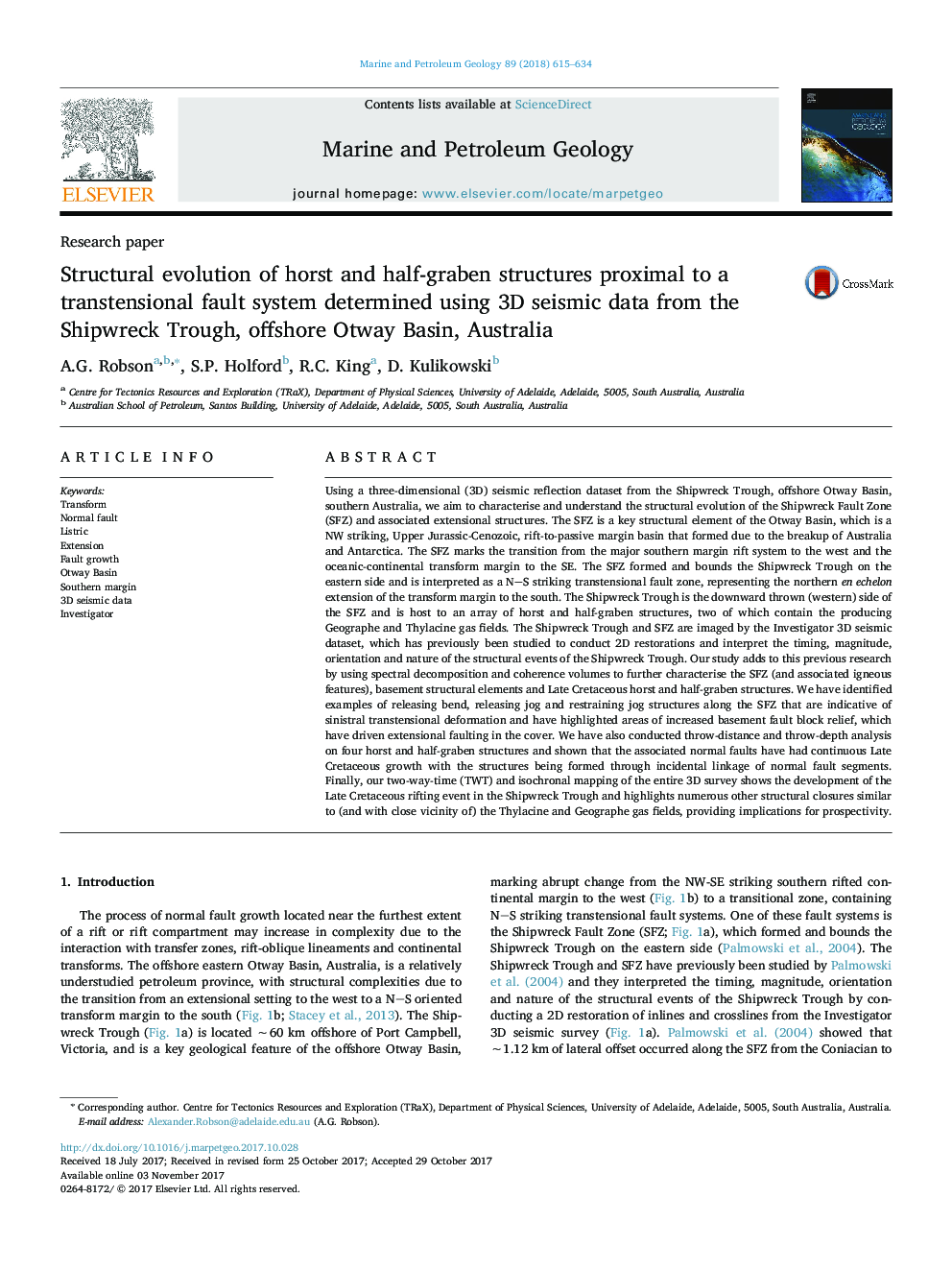| Article ID | Journal | Published Year | Pages | File Type |
|---|---|---|---|---|
| 8909263 | Marine and Petroleum Geology | 2018 | 20 Pages |
Abstract
Using a three-dimensional (3D) seismic reflection dataset from the Shipwreck Trough, offshore Otway Basin, southern Australia, we aim to characterise and understand the structural evolution of the Shipwreck Fault Zone (SFZ) and associated extensional structures. The SFZ is a key structural element of the Otway Basin, which is a NW striking, Upper Jurassic-Cenozoic, rift-to-passive margin basin that formed due to the breakup of Australia and Antarctica. The SFZ marks the transition from the major southern margin rift system to the west and the oceanic-continental transform margin to the SE. The SFZ formed and bounds the Shipwreck Trough on the eastern side and is interpreted as a NS striking transtensional fault zone, representing the northern en echelon extension of the transform margin to the south. The Shipwreck Trough is the downward thrown (western) side of the SFZ and is host to an array of horst and half-graben structures, two of which contain the producing Geographe and Thylacine gas fields. The Shipwreck Trough and SFZ are imaged by the Investigator 3D seismic dataset, which has previously been studied to conduct 2D restorations and interpret the timing, magnitude, orientation and nature of the structural events of the Shipwreck Trough. Our study adds to this previous research by using spectral decomposition and coherence volumes to further characterise the SFZ (and associated igneous features), basement structural elements and Late Cretaceous horst and half-graben structures. We have identified examples of releasing bend, releasing jog and restraining jog structures along the SFZ that are indicative of sinistral transtensional deformation and have highlighted areas of increased basement fault block relief, which have driven extensional faulting in the cover. We have also conducted throw-distance and throw-depth analysis on four horst and half-graben structures and shown that the associated normal faults have had continuous Late Cretaceous growth with the structures being formed through incidental linkage of normal fault segments. Finally, our two-way-time (TWT) and isochronal mapping of the entire 3D survey shows the development of the Late Cretaceous rifting event in the Shipwreck Trough and highlights numerous other structural closures similar to (and with close vicinity of) the Thylacine and Geographe gas fields, providing implications for prospectivity.
Related Topics
Physical Sciences and Engineering
Earth and Planetary Sciences
Economic Geology
Authors
A.G. Robson, S.P. Holford, R.C. King, D. Kulikowski,
